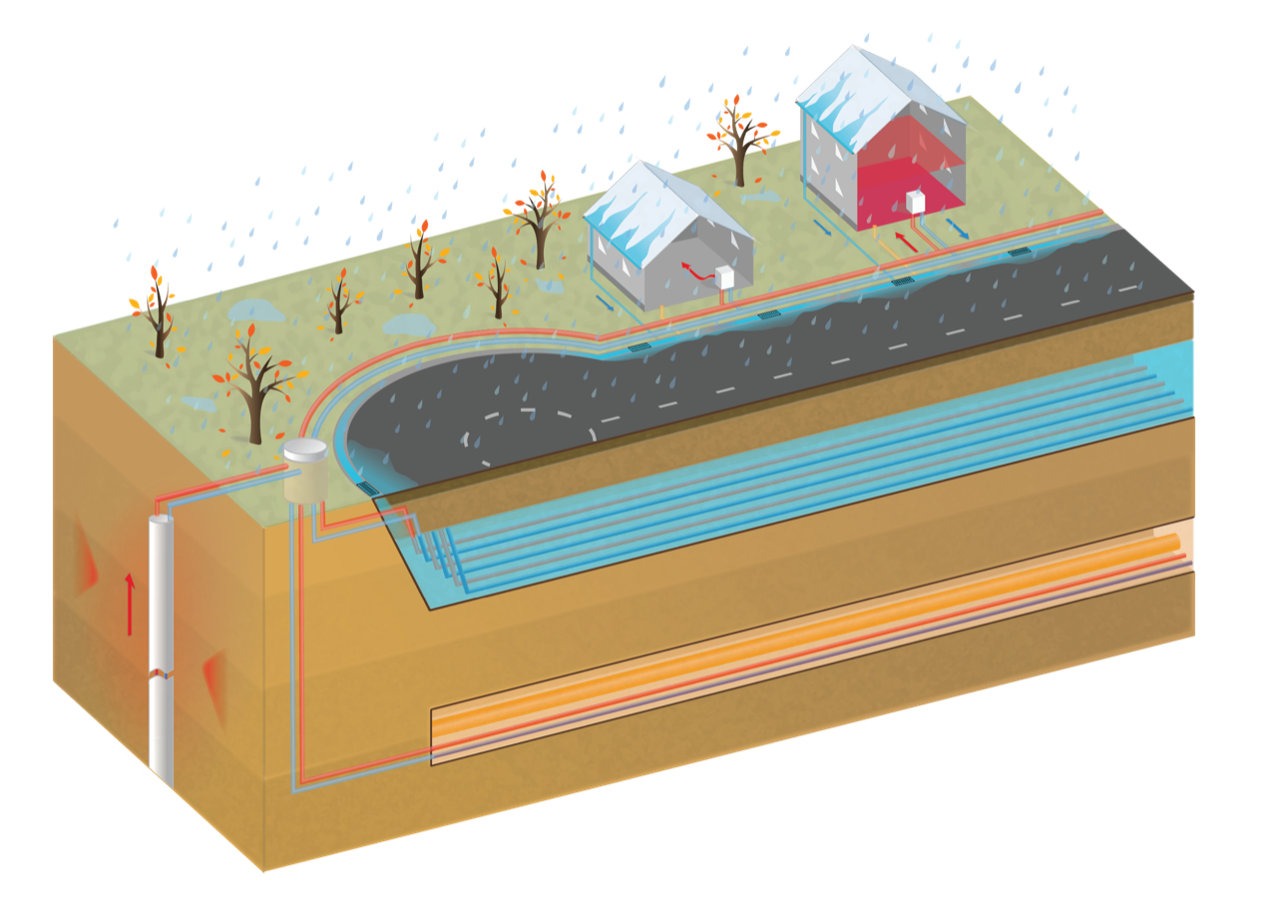With the support from INTERREG-ÖKS the COOLGEOHEAT project started in January 2021 and is running for the next 2-years. The project has participants from both knowledge institutions, investment funds and small and medium-sized companies from Denmark and Sweden, respectively. The project will work to develop the collective energy supply of the future through shallow heothermal energy which is free of both fossil fuels and biomass.
The ground immediately below our feet holds enormous amounts of energy that are perpetually renewed by the Sun's radiation as it is absorbed into the ground. We refer to this 100% renewable energy resource as near-surface geoenergy. The utilization of near-surface geoenergy is known from ground source heat pumps, that traditionally supply individual households and buildings by abstracting the energy with a heat pump. When a ground source heat pump consumes one unit of electricitical energy, it typically supplies 3-5 units of heat, most of which is renewable as it is supplied from the ground. But near-surface geoenergy can be thought of in a much larger context - namely as a collective energy supply concept with several consumers connected to grid of pipes with ground heat exchangers that, in addition to heat, is able to provide extremely energy-efficient cooling due to the low soil temperatures all year round. Thus, the earth is also a large battery for storing heat and cooling, that is able to absorb and release energy when it is advantageous compared to other green and often fluctuating energy sources such as wind power and solar energy. Collective, nearsurface geoenergy is predicted to play a major role in the future decarbonisation of the European heating and cooling sectors as it is possible not only to reduce the use of fossil fuels but also of controversial biomass and to increase the efficiency of the use of these scarce resources.

This project aims to increase the production of renewable geothermal energy from near-surface soil layers to support collective heating and cooling supply of future green cities. The energy supply concept is known as 5th generation district heating and cooling (5GDHC). Here, a collective network of uninsulated pipes buried at shallow depth connects consumers to geothermal heat exchangers. Consumers recover heat with geothermal heat pumps while cooling is possible without the use of a heat pump (free/passive cooling) due to the low ground temperatures. The advantages of geothermally based 5GDHC are many compared to, for example, individual air-to-water heat pumps, which include a significantly higher efficiency of geothermal heat pumps yielding a lower cost of operation, the possibility of high-efficiency free cooling and seasonal storage of energy from virtually all surplus heat sources. Furthermore, it allows for collective and sustainable heating and cooling supply systems in areas that cannot be connected to the existing district heating networksdue to the geographical distance, elevating costs beyond the benefits for the consumers. Most of the energy is produced locally from the ground and thus 5GDHC is less sensitive to external volatile factors such as the import of wood pellets and waste incineration.
The project is divided into seven work packages and firstly aims at developing a flow and temperature model for 5GDHC networks for dimensioning, efficiency estimation and scenario analysis of operational networks. To support the validation of the computational model, operational data from existing 5GDHC grids in Sweden and Denmark are compiled and analyzed. On that basis, an economic model is developed to quantify the variable costs of 5GDHC given various models of ownership and operations. In support of this work, the project determines the optimal business model for 5GDHC to ensure further commercialization and dissemination of 5GDHC. Finally, the project compiles and documents the entire workflow from idea to operation of 5GDHC in a best practice for Sweden and Denmark, respectively. The findings in the project are widely disseminated to all stakeholders on works shops, the project homepage and on national and
international conferences.
